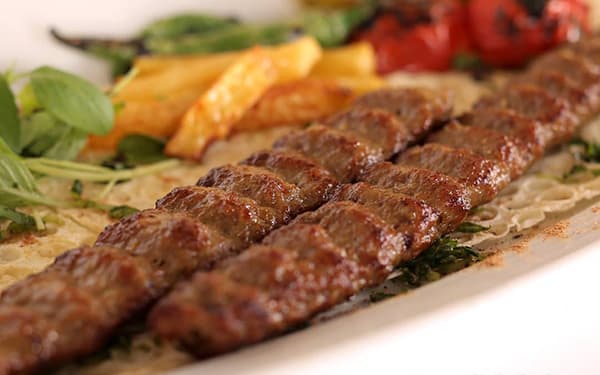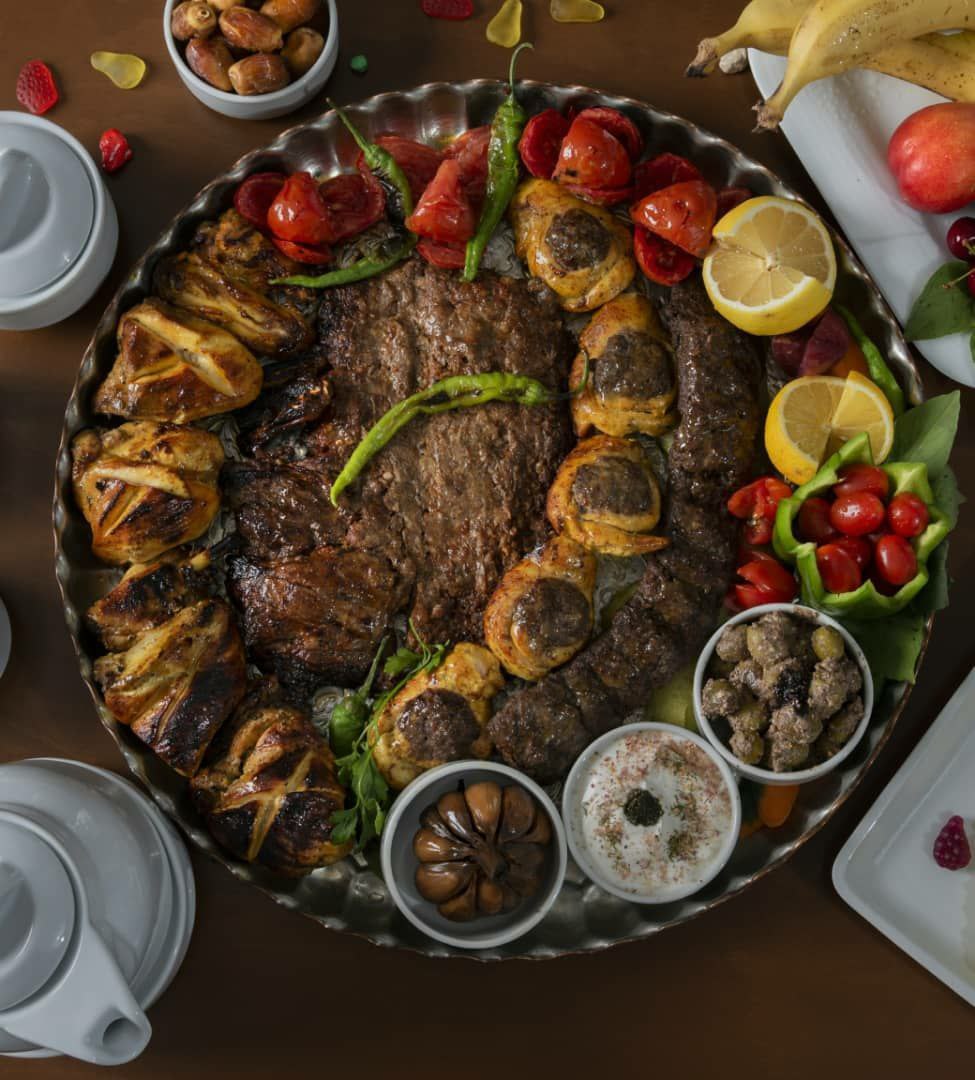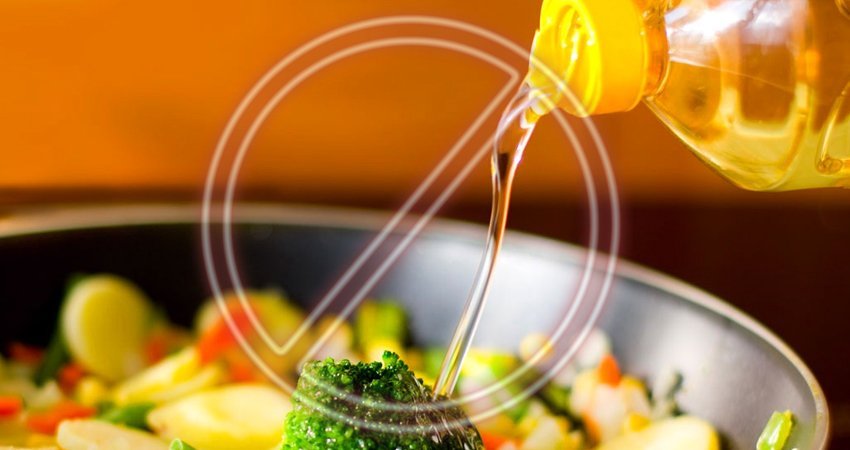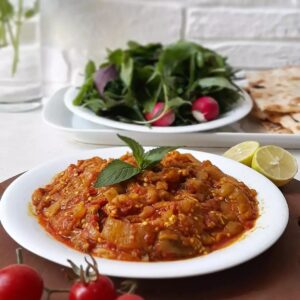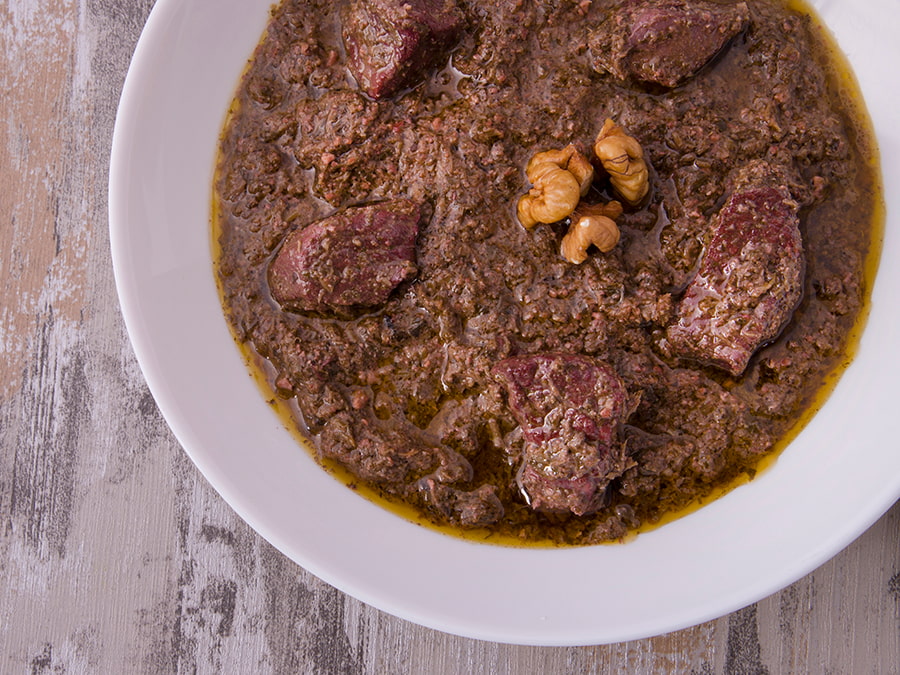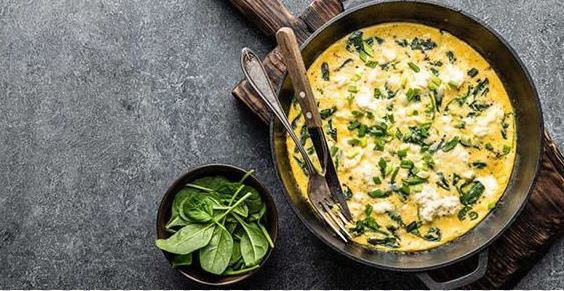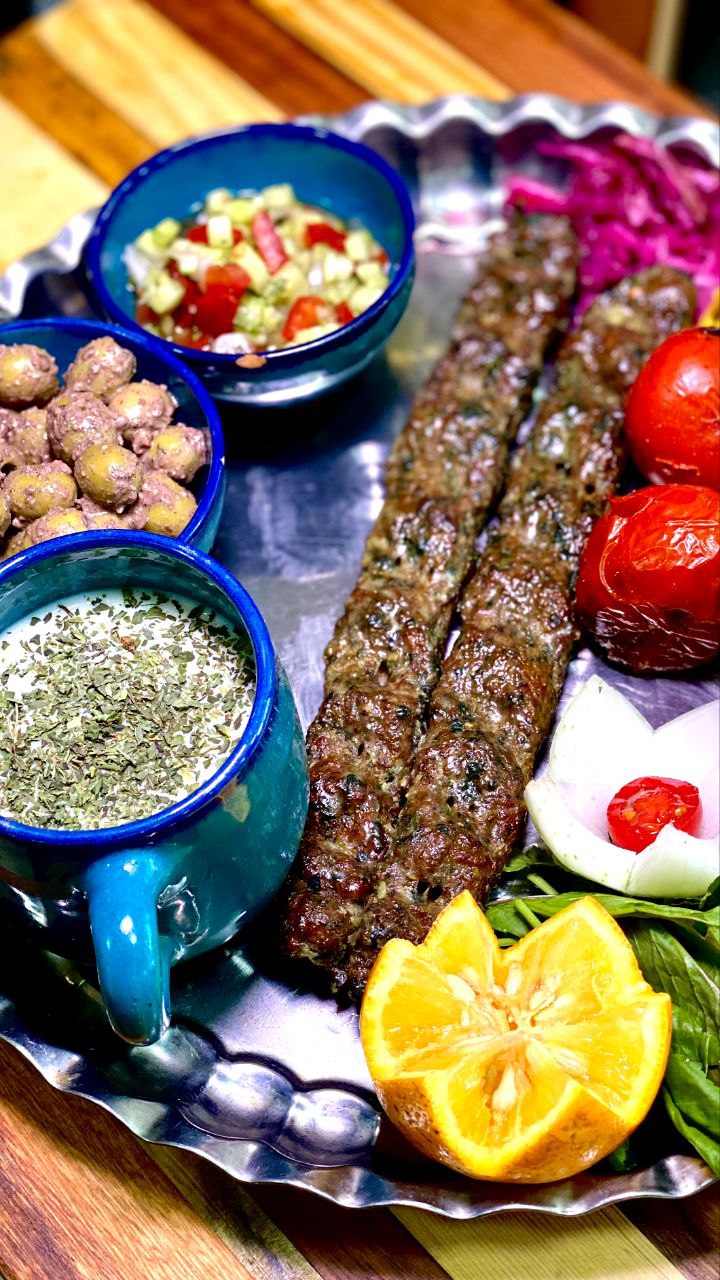
This post is also available in:
 English
English  فارسی
فارسی  العربية
العربية
Differences Between Lebanese Kebab and the Famous Koobideh
Kebab is one of the most popular meat dishes, prepared in various ways and flavors across different cultures. Two prominent examples of kebabs common in the Middle East and Persian-speaking countries are Koobideh and Lebanese kebab. Despite similarities in ingredients and cooking methods, these two types of kebabs have clear and distinct differences that can be observed in taste, shape, serving style, ingredients used, and even cooking techniques. Next, professional chefs at the best kebab restaurant in Rasht will examine the details and differences between Lebanese kebab and Koobideh.
Definition of Koobideh Kebab
Initially, professional chefs at the best kebab restaurant in Rasht define Koobideh kebab. Koobideh is one of the most popular types of kebab in Iran and some Persian-speaking countries, usually made with ground meat. This type of kebab is prepared from a mixture of lamb and beef or a combination of both, along with grated onions, salt, and other spices. Large metal skewers are used to prepare Koobideh, and the meat mixture is evenly spread on the skewers to achieve a uniform shape. Once ready, Koobideh is grilled over charcoal and is usually served with bread, rice, herbs, tomatoes, and grilled peppers.
Definition of Lebanese Kebab
Lebanese kebab is one of the well-known types of Middle Eastern kebabs, with specific characteristics in both ingredients and cooking method. This kebab is usually made from lamb or mutton combined with spices and fresh herbs. The main difference in Lebanese kebab lies in the special spices and flavorings added to it. Professional chefs at the best kebab restaurant in Rasht state that this kebab is flavored with ingredients such as garlic, parsley, mint, and Lebanese spices, and it is usually served with laban (yogurt), tabbouleh, pita bread, and sometimes hummus. Lebanese kebab comes in many varieties and is sometimes prepared in different shapes, including small meatballs or rolled meat.
Differences Between Lebanese Kebab and Koobideh

The differences between Lebanese kebab and Koobideh can be described in several ways, which professional chefs at the best kebab restaurant in Rasht address as follows:
- Ingredients of Koobideh and Lebanese kebabs
- Taste and flavor of the kebabs
- Cooking method
- Shape and appearance of the kebabs
- Serving method
- Nutritional value
- Popularity and cultural significance
Ingredients of Koobideh and Lebanese Kebabs
One of the main differences between Koobideh and Lebanese kebabs lies in their ingredients. Both types of kebab are meat-based, but there are many differences in detail:
- Koobideh: Professional chefs at the best kebab restaurant in Rasht explain that the main ingredients of Koobideh include ground meat (usually a mix of lamb and beef), onions, salt, and pepper. In some recipes, a little saffron may be added, but generally, this kebab does not use many spices.
- Lebanese Kebab: The ingredients of Lebanese kebab, in addition to ground meat, include more vegetables and spices. Ingredients often include garlic, chopped parsley, mint, and special Lebanese spices such as black pepper, cinnamon, paprika, and even cumin. These ingredients give Lebanese kebab its unique aroma and flavor.
Comparing the Taste and Flavor of Lebanese Kebab and Koobideh
Lebanese kebab and Koobideh each have their own distinctive qualities that make their taste unique. Lebanese kebab is usually made from beef or lamb with mild spices like saffron, cumin, and cinnamon, resulting in a light, aromatic, and slightly sweet flavor. These kebabs are typically grilled on long, thin skewers and are often served with fresh vegetables and pita bread.
In contrast, professional chefs at the best kebab restaurant in Rasht note that Iranian Koobideh is usually made from ground lamb or a combination of lamb and veal, offering a richer and fattier taste with stronger spices such as saffron, black pepper, salt, and onion. Koobideh generally has a larger volume, is made in bigger sizes than Lebanese kebab, and is served with rice or traditional Iranian bread. Overall, Lebanese kebab has a milder and softer taste, while Koobideh delivers a stronger, fattier flavor.
Cooking Methods of Lebanese Kebab and Koobideh
The cooking methods of these two types of kebab also differ:
- Koobideh: This kebab is traditionally grilled over charcoal. The Koobideh skewers are placed over the charcoal and rotated gradually to cook the kebab evenly. Due to the soft texture of the ground meat, Koobideh cooks quickly over charcoal heat.
- Lebanese Kebab: Lebanese kebab is also usually grilled over charcoal, but it can sometimes be cooked in the oven or on a grill. Some types of Lebanese kebab are made as small meatballs or rolled meat, which can also be baked in the oven. Because of the additional spices and the moisture from the vegetables, this kebab requires more cooking time to allow the flavors to fully penetrate the meat.
Differences in Shape and Appearance of the Kebabs
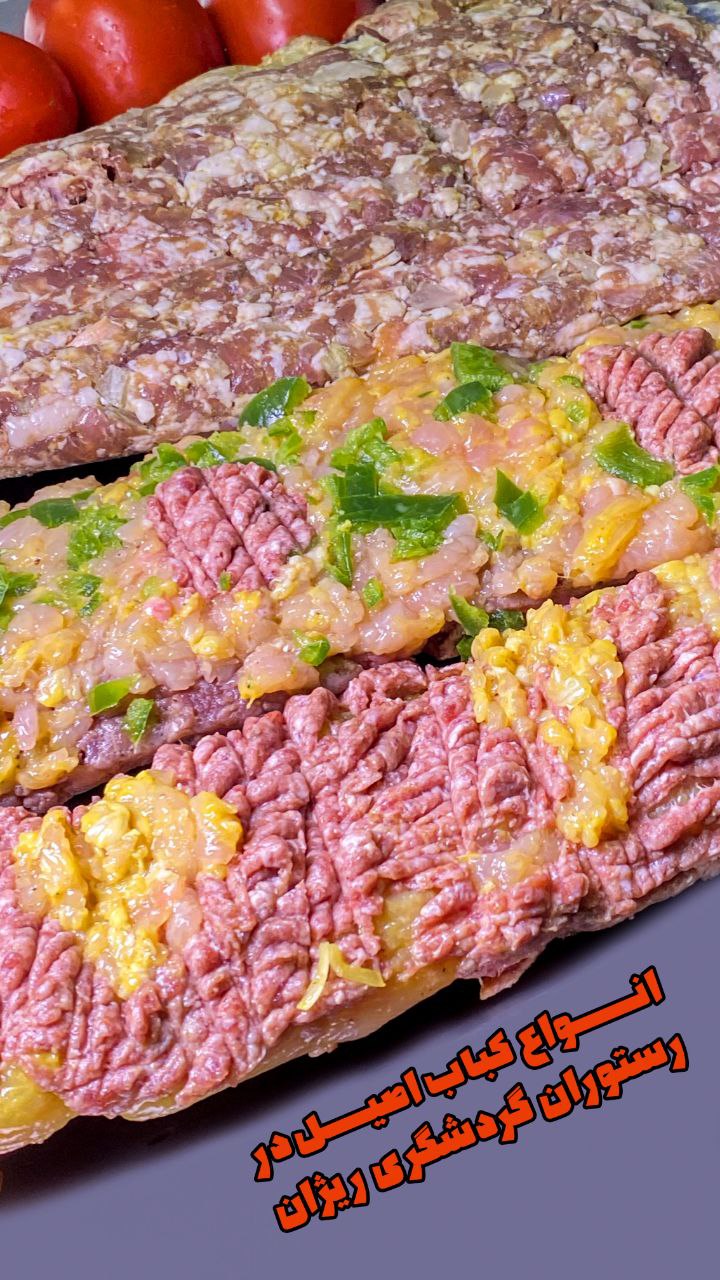
Professional chefs at the best kebab restaurant in Rasht state that the difference in shape and appearance between these two types of kebab is also noticeable:
- Koobideh Kebab: Koobideh is prepared as a long, uniform skewer placed on a metal rod and grilled horizontally and evenly over charcoal.
- Lebanese Kebab: Lebanese kebab may be made as small meatballs, rolled meat, or even in a shape similar to Koobideh, but its shape and cooking style are more varied, so it can appear in different sizes and forms.
Serving Method of These Delicious Kebabs
The serving methods of Koobideh and Lebanese kebabs also differ:
- Koobideh Kebab: In Iran, Koobideh is usually served with saffron rice, Sangak or Lavash bread, grilled tomatoes and peppers, fresh herbs, and sometimes onions. It is often consumed as a main dish during formal meals.
- Lebanese Kebab: Lebanese kebab is served with pita or other Middle Eastern flatbreads and often accompanied by hummus, tabbouleh, laban (Lebanese yogurt), fattoush salad, and pickles. It can be served as a main dish or even as a light appetizer.
Nutritional Value
Regarding nutritional value, Lebanese and Koobideh kebabs differ, mainly depending on the type of meat and fat content. Lebanese kebab is usually made from lamb or beef, and due to the use of mild spices and relatively low fat, it has fewer calories and fat compared to Koobideh. This kebab is generally served with vegetables and pita bread, which are good sources of fiber and vitamins.
In contrast, Iranian Koobideh, due to the use of ground meat—especially a combination of lamb and veal—typically contains higher fat and calories. This type of kebab is usually richer and greasier, which can increase its protein and energy content. However, consuming it in large amounts may not be suitable for those monitoring their fat and calorie intake. Overall, Lebanese kebab, due to its simpler ingredients and lower fat content, is a lighter and lower-calorie option, whereas Koobideh, with its stronger flavor and higher fat, provides more energy.
Popularity and Cultural Significance
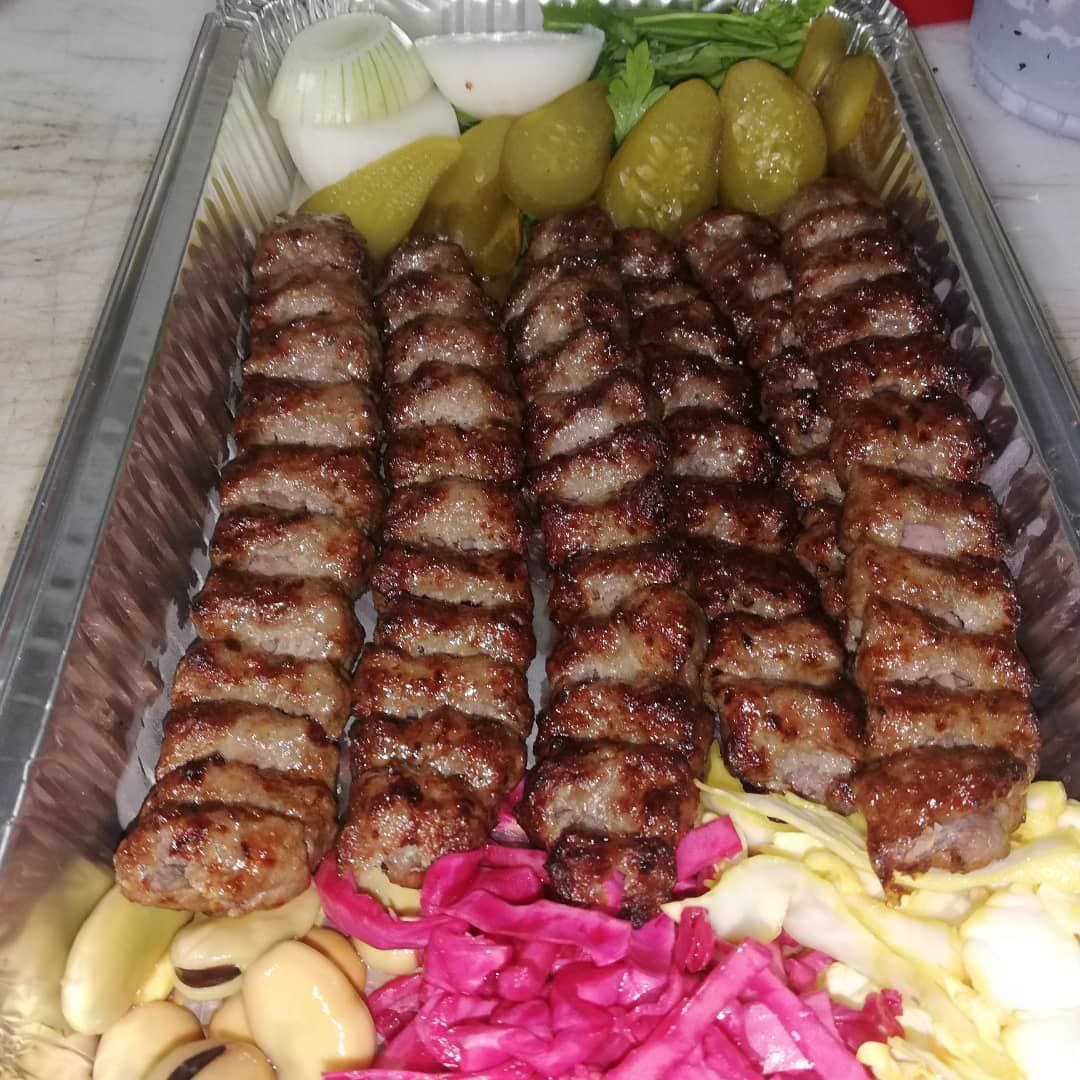
Professional chefs at the best kebab restaurant in Rasht state that Koobideh and Lebanese kebabs are popular in various parts of the world due to cultural differences and unique flavors.
- Koobideh Kebab: In Iran and neighboring countries such as Afghanistan and Tajikistan, Koobideh is highly popular and recognized as a traditional, even national, dish. Iranians, in particular, prepare and enjoy Koobideh during various celebrations and ceremonies.
- Lebanese Kebab: In Lebanon and Middle Eastern countries like Syria and Jordan, Lebanese kebab enjoys great popularity and is recognized as an authentic Lebanese dish. Due to its diverse flavors and special spices, it also attracts tourists and enthusiasts of Arabic cuisine.
Conclusion
Both Koobideh and Lebanese kebabs are delicious and widely loved dishes, each representing the culinary culture and taste of its region. Koobideh, with its simple and meat-focused flavor, holds a special place as a traditional dish in Iran, while Lebanese kebab, with its rich aroma and flavor from Lebanese spices and fresh herbs, reflects the diversity and freshness of Middle Eastern cuisine. Despite similarities in ingredients and cooking methods, these two types of kebabs highlight the taste and cultural differences of two distinct regions, each appealing to a specific palate.
Do not miss this content
Nowruz Eid food in Iranian cities
How to Steam Broccoli to Add to Different Dishes
History of the formation of restaurants
Familiarity with some of the etiquette of going to a rest...
Benefits and Recipe of Simple and Delicious Yatimcheh
The trick and the correct method of freezing food
Foods that we can prepare with minced meat
Reviewing the Difference Between Kabab Barg and Chenjeh
Some of the benefits of online food ordering system
Introducing the right meat for every meal
Bonab Kebab & How It Differs from Koobideh
